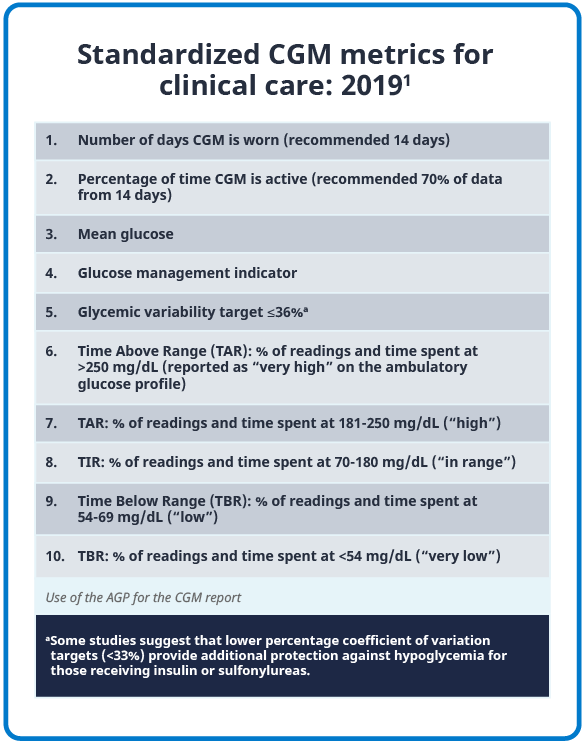GETTING STARTED WITH TIME IN RANGE (TIR) AND CONTINUOUS GLUCOSE MONITORING (CGM)
For healthcare professionals who may not be familiar with CGM or TIR but are interested in learning more about how to integrate them into clinical practice:
Review the International Consensus Report on Clinical Targets for CGM Data Interpretation, which provides information about specific glucose targets and treatment goals1
Identify who could benefit from CGM, as outlined by Dr Alice Cheng, University of Toronto, in the video below

The ideal candidate for CGM: Dr Alice Cheng describes who she would recommend for CGM.
Healthcare professional has received a fee from Novo Nordisk Inc. for her participation.
According to the Association of Diabetes Care & Education Specialists (ADCES), any of these factors could indicate that a person with diabetes may benefit from CGM2:
Taking multiple daily injections of insulin
Using an insulin pump
Frequent hypoglycemia
Hypoglycemia unawareness
High degree of glycemic variability
Not achieving glucose targets
Review the latest recommended glycemic targets.

Steps for getting started with TIR
It is recommended that healthcare professionals take the following steps as they start adopting TIR with people with diabetes1,3-5:
- Emphasize the importance of reducing the time spent below range, with glucose levels below 70 mg/dL, to “less than 1 hour per day” and time spent below 54 mg/dL to “less than 15 minutes per day.” This way, people do not have to determine the time corresponding to these percentages (4% and 1%, respectively) on their own
- Ensure understanding of reducing time spent above range, with glucose levels above 180 mg/dL as “less than 6 hours per day” and time spent above 250 mg/dL to “less than 1 hour, 12 minutes per day”
- Review the ambulatory glucose profile to identify the timings and magnitudes of glycemic variability
- Consider all the variables, such as food choices, physical activity, and medications, that affect a person’s glucose profile before making treatment recommendations
- Ensure each person with diabetes understands their glucose targets and is comfortable using CGM
In her video (below), Dr Alice Cheng suggests that it may help to tell people with diabetes who are starting on CGM that they will receive a higher volume of data than they might be used to and not to be alarmed by this information in the first couple of days. Their next follow-up visit can often be an opportunity for them to ask questions and review different metrics, such as TIR, within their app or device. This will help them to understand the potential drivers between in-range and out-of-range readings, and to make any necessary lifestyle or behavioral adjustments to increase TIR.

Dr Alice Cheng shares her key considerations when getting a person started with CGM and empowering them to manage their glucose levels.
- Battelino T, Danne T, Bergenstal RM, et al. Clinical Targets for Continuous Glucose Monitoring Data Interpretation: Recommendations From the International Consensus on Time in Range. Diabetes Care. 2019;42(8):1593-1603.
- The Association of Diabetes Care & Education Specialists. Personal continuous glucose monitoring implementation playbook; December 2020. Accessed: May 2021. https://www.diabeteseducator.org/docs/default-source/practice/educator-tools/cgm-playbooks/personal-cgm-playbook.pdf?sfvrsn=2.
- Wysham CH & Kruger DF. Practical Consideration for Initiating and Utilizing Flash Continuous Glucose Monitoring in clinical Practice. Journal or Endocrine Society. 2021. Epub ahead of print. DOI: org/10.1210/jendso/bvab064.
- American Diabetes Association. Standards of Care in Diabetes—2023. Diabetes Care. 2023;46(suppl 1):S1-S291.
- Wright EE Jr, Morgan K, Fu DK, Wilkins N, et al. Time in Range: How to Measure It, How to Report It, and Its Practical Application in Clinical Decision-Making. Clin Diabetes. 2020;38(5):439-448.